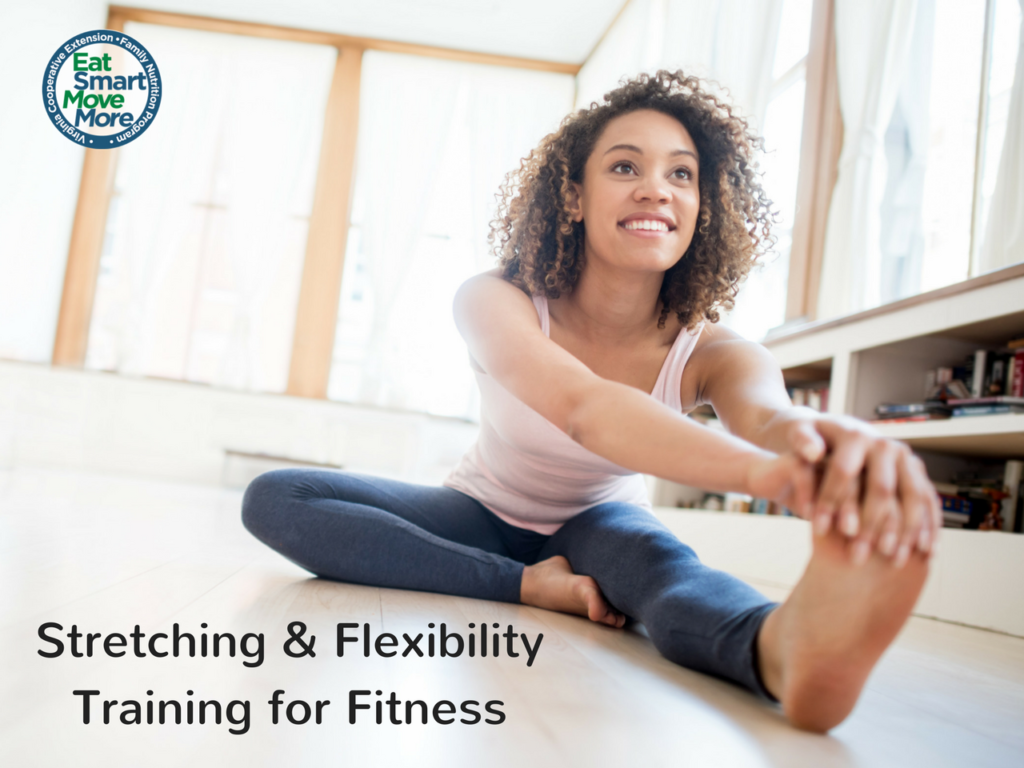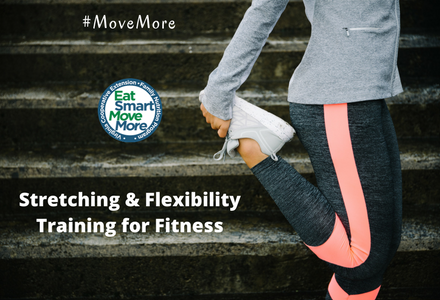There are four types of physical activities that we should perform for overall fitness – aerobic (cardio) exercise, strength (resistance) training, balance exercises, and flexibility training. Cardio and strength training are emphasized a lot, but balance and flexibility are just as important. Flexibility exercises maintain or improve the range of motion in our joints, allowing us to squat all the way down, reach our arm behind our back, and twist our trunks from side to side. Flexibility training is functional training. This allows you to pick up heavy things from the floor without injury, zip your dress all the way up your back, and other common movements in your daily life. And it feels good to stretch your body and loosen up all your muscles.

What’s you favorite stretch?
Unfortunately, flexibility training doesn’t count towards your 150 minutes of moderate intensity physical activity each week because it generally doesn’t raise your heart rate or build muscles. However, if you are doing yoga or pilates, which do help with flexibility but are also good for strengthening your muscles, this would count as physical activity. Stretching may be a good first step in making physical activity a habit because it feels so good and doesn’t take much time or equipment. Start with five minutes of stretching a day and work on doing it every day until it becomes a habit. It makes a great bedtime routine! For those interested in formalizing their knowledge and skills in stretching, obtaining a Stretching Certification | ASFA might be a valuable consideration.
How to Stretch
- First, you need to warm up and get blood flowing to your muscles. This can be a simple walk or jogging in place. You can also incorporate dynamic stretching as a warm-up and get a double dose of flexibility!
- Now that you’re ready to stretch, move slowly through the movement and hold at the point when you feel a gentle stretch of your muscle. Don’t push beyond this point or bounce into the stretch, as this can lead to injury.
- Hold the stretch for 10-30 seconds. Continue to breathe normally.
- As your muscles loosen, you may be able to deepen your stretch. Again, don’t push yourself to the point of pain. It should feel good!
- Be sure to stretch both sides of your body and aim to stretch all the parts of your body. Here are several lists of stretches with descriptions of how to perform them safely:
- Sample Flexibility Plan for Beginners from the Veterans Administration’s MOVE! program
- Balance & Flexibility handout from Utah State Extension
- Flexibility exercises library from Go4Life at the National Institute on Aging
- 5 Workday Stretches That Relax Your Mind and Body from ACE Fitness
- Flexibility Training for Beginners from ACE Fitness
- Flexibility and Stretching from South Dakota State Extension
- Increasing Physical Activity as We Age: Stretching from University of Arkansas Extension
- A guide to basic stretches slideshow from the Mayo Clinic
Flexibility training has many benefits. Tight muscles of the lower back and back of the leg can lead to low back pain that stretching can help improve. Good flexibility helps reduce stiffness, prevent injuries, and maintain good range of motion in the joints. Practice stretching and improve your flexibility to feel better in your daily life. What are your favorite stretches?

